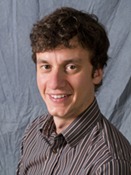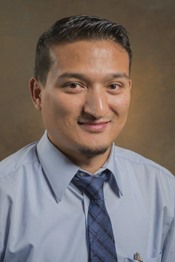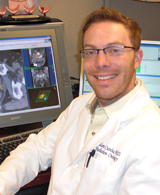Program Information
Open Source Hardware in Medical Physics and Its Potential to Accelerate Innovation

F Therriault-Proulx
S Prajapati
J Cunha
F Therriault-Proulx1*, S Prajapati1*, J Cunha2*, (1) MD Anderson Cancer Center, Houston, TX, (2) UC San Francisco, San Francisco, CA
Presentations
10:00 AM : Open Source Hardware: General overview - F Therriault-Proulx, Presenting Author10:20 AM : Open Source Medical Devices: lessons learned from a complex collaborative research project - S Prajapati, Presenting Author
10:40 AM : Open Source Hardware in the context of simple and widely shared clinical applications - J Cunha, Presenting Author
TH-C-BRB-0 (Thursday, August 4, 2016) 10:00 AM - 11:00 AM Room: Ballroom B
By definition, Open Source Hardware (OSH) is “hardware whose design is made publicly available so that anyone can study, modify, distribute, make, and sell the design or hardware based on that design”. The advantages of OSH are multiple and the movement has been growing exponentially over the last couple years, leading to the spread and evolution of 3D printing technologies, the creation of affordable and easy to use micro-controller boards (Arduino, Raspberry Pi, etc.), as well as a plurality of other “hands-on”/DIY projects.
As we have seen over the past few years with 3D printing, where the number of projects benefiting clinical practice as grown significantly, the highly educated and technology savvy Medical Physics community is positioned to take advantage of and benefit from paradigm-shifting movements. Sharing of knowledge, know-how, and technology can be a key factor in furthering the impact medical physicists can have. Whether it is to develop phantoms, applicators, detector holders or devices based on the use of motors and sensors, sharing design files significantly enables further development.
Because these designs would be massively peer-reviewed through their online publication, improvements would be made, and the creators of the design would be rewarded with an increase number of citation of their work. A curated database of software and hardware projects can be an invaluable to the field, but a critical mass of contributors is likely needed to guarantee the most impact. This symposium will discuss the benefits and hurdles for such an endeavor.
Learning Objectives:
1.Learn how an open source hardware architecture functions including intellectual property rights;
2.Learn how open source hardware projects can impact the medical physics field and be introduced to successful applied examples;
3.Learn about projects currently being undertaken by researchers in the field that promise to provide a platform for collaborative sharing of open source hardware in medical physics.
Handouts
- 115-31924-387514-119206.pdf (F Therriault-Proulx)
- 115-31925-387514-119631.pdf (S Prajapati)
- 115-31926-387514-118856.pdf (J Cunha)
Contact Email:



